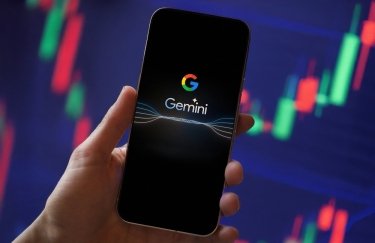

There is, though you might not immediately notice it, a segment of the internet that has spent the past month semi-riveted by the suspension and reinstatement of the legendary weird Twitter account @Four_Pins.
The account, best known for memes about menswear and the internet-savvy but “swagless” kids who foam at the mouth upon each announcement of a new limited-edition sneaker, has a few claims to fame: It was first to notice Jonah Hill getting “fit”; first to pay careful attention to the California streetwear evolution of early-aughts relic John Mayer; and, quite simply, the most thorough and diligent chronicler of the rise of a streetwear-obsessed subculture that was once relegated to Reddit and is now covered in Vogue.
It disappeared from Twitter for a little less than a month, starting in mid-December — seemingly out of chances to stop posting unlicensed photographs of celebrities. Then CEO Jack Dorsey, reportedly, personally brought it back. The internet rejoiced.
But you don’t have to be interested in Supreme or Simpsons reaction GIFs or even style in general to care about the @Four_Pins journey. This drama says enough about life on our capriciously run dominant platforms, before it says anything in particular about fashion. And the blip of a conflict is a reminder of how Twitter operates — by whim, and in secret — who has influence over it, and what Jack Dorsey cares about.
@Four_Pins still has more than 600,000 followers, but all its tweets are gone. The account, freshly resurrected, yesterday tweeted and then promptly deleted a promise to post “no more copyright infringing content.”
@Four_Pins spurred a vivid and often entertaining conversation about what’s cool and what’s not, when it’s okay to try and when it isn’t. And it’s one that couldn’t have been built without Twitter, which we know mostly because it started as a website and failed: At first, @Four_Pins was just the social promotion account for Complex Media’s street style and pop culture blog, founded — perhaps prematurely — in 2012.
The blog shut down in early 2016, shortly after editor Lawrence Schlossman left Complex to take a job at the menswear-cult-dependent resale app Grailed, and its exit from RSS feeds was fairly unceremonious. Its URL started redirecting to Complex’s general style section, and a vague note was provided to interested media outlets:
Complex failed to monetize the Four Pins website, but the Four Pins Twitter account was a hit all along. In December 2015, after Four Pins’ pending closure was unceremoniously revealed in the middle of a New York Times story about an internet-y Italian menswear store on the Upper East Side, Schlossman tweeted, “chill fam the twitter isn’t going anywhere it’s not like any of u literally read the site more than once lmao.”
It only got bigger after the site stopped existing, accruing hundreds of thousands of new followers in the past two years — partly because the jokes were funny, but largely because it was in the right place at the right time, and because everyone loves a chaotic, disembodied troublemaker. Oddly, although Schlossman never denied receiving a small monthly fee from Complex to keep the account running and took credit for the account in his personal Twitter bio, “Who runs Four Pins?” became its own persistent meme, as documented by Dave Infante for Mel Magazine earlier this year. It just seemed like there must be some omnipotent, mannerless menswear god behind the keyboard.
Infante’s piece grapples with the importance of @Four_Pins, eventually concluding that it isn’t so bro-y or mean as it might seem at first glance:
In the same piece, Schlossman actually said that he hoped Twitter would die soon, so that he could stop making memes and go back to being “just this lame dude, the former editor-in-chief of a site that nobody read.”
@Four_Pins vanished sometime in December, reportedly because of its use of copyrighted paparazzi photos — like those of its favored muse, Hill, who has a habit of wearing expensive, flashy clothes in dreary contexts, as when he was spotted smoking a cigarette in front of a mattress store, wearing a gold chain and a Palace x Adidas jersey tucked into a pair of navy joggers.
The blip of a conflict is a reminder of how Twitter operates — by whim, and in secret
Twitter is notoriously strict about Digital Millennium Copyright Act takedown requests: “Strikes” in violation of its copyright policy are measured from the birth of the account, not the type of the last suspension, which makes it fairly easy to lose years of tweets and audience-building on the platform permanently. It’s a problem faced by a lot of celebrity fan accounts, which often make burner media accounts to retweet onto their main feed. (It also means @Four_Pins could be removed the platform forever if it slips up again.)
According to the timeline pieced together by GQ’s Cam Wolf, the drama started when the menswear blog Put This On published a post about the suspension on December 18, then tweeted about it, saying, “neo nazis can be on this site but four pins is really banned.” Kiya Babzani, a microinfluencer and denim retailer from San Francisco, replied to that tweet saying that he might be able to help. He reportedly ended up calling his personal friend Jack Dorsey six times, emphasizing “how important of a voice that account was to the fashion industry that we’re in.” Schlossman says he didn’t bother to hire a lawyer or appeal the suspension via any of the official channels, yet now the account is back.
Twitter never comments directly on account suspensions, even when they seem to be a matter of clear public interest
When I emailed a Twitter spokesperson to ask if it was true that Dorsey personally intervened, and whether the operator of @Four_Pins had to make any guarantees about its content going forward, a spokesperson responded, “Upon further review, we reinstated the account. Nothing further to share at this time.”
It wasn’t surprising. Twitter never comments directly on account suspensions, even when they seem to be a matter of clear public interest, typically citing vague privacy reasons that rarely hold water.
The fact that @Four_Pins will live another day is fine, of course, because it’s just a running commentary on celebrities and clothing brands that can certainly take a joke. It’s also not fine, because no one will say why these stolen photographs are more forgivable than a Taylor Swift fan’s stolen photographs or whether it’s even true that getting the attention of a personal friend of the CEO will help you out. What’s interesting about this case, now, is that it can help us pick at the main existential question of Twitter: Who does and doesn’t belong there? How is the choice being made?
Certainly, these questions are more urgent when we’re talking about toxic subcultures that cause real-world suffering and strive to render the platform unusable. But every random, unexplained choice is a subtle reminder of all the other ones.
As to why the CEO of Twitter would care about @Four_Pins at all — he has some documented interest in streetwear and in keeping up a cult of appearances. He’s been dressing like Jonah Hill lately, and infamously wore a pair of $700 Rick Owens sneakers to discuss his company’s tanking stock at a 2016 all-hands meeting. He was recently photographed on vacation in an all-black ensemble featuring drop-crotch shorts, hand in hand with girlfriend Raven Lyn Corneil, who was wearing a Chanel fanny pack (sorry, a several-thousand-dollar “waist bag”).
Maybe his choice to bring back @Four_Pins is not due to anything so simple or silly as a personal enjoyment of its memes, but rather his understanding of the importance of the @Four_Pins audience.
Though the account has certainly violated copyright law, the question of who owns a meme is only getting murkier, as is the question of what constitutes the “meaningful transformation” of an image that’s required to evade that law. Not only that, but the power of hypebeast boys is undeniable and increasingly serves as positive PR for tech CEOs and legacy brands — the Venn diagram of people propping up cults of personality around Travis Scott and Elon Musk is getting smushed inward toward becoming a circle, and these same people shell out for both Louis Vuitton and Taco Bell. They can look like important people to have on your side.
The broader mythos of men’s streetwear as it’s understood now — with heavy reference to dirtbag celebrities and internet language so tongue-in-cheek it’s effectively nonsense — grew up on Reddit and has hit the mainstream on Twitter, where it is more than welcome and more than useful. The social internet was built on a foundation of likes, which were used to identify subcultures and lay the gridwork for the modern online advertising ecosystem. We all said what we were into, and this information revealed itself as valuable. (Even in death, MySpace is making money off it.)
Maybe it’s as simple as this: Twitter can’t afford to lose anything people like when it’s still struggling to get rid of the things people hate.
Sourse: vox.com






